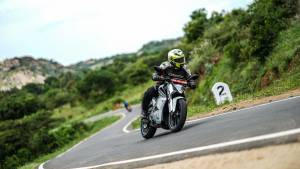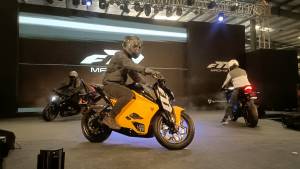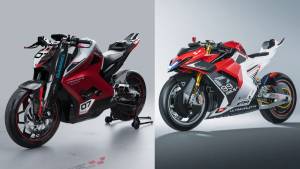2023 Ultraviolette f77 review - A second chance
Some of you may remember that Ultraviolette is a Bengaluru-based startup (with some funding from TVS, amongst others) and in 2019 they presented us with a prototype that claimed to be "India's first electric superbike". With an 8s+ 0-100kmph sprint and a top speed under 150kmph, it was anything but a superbike. But compared to the other electric motorcycles of the time - be they merely assembled or throughly engineered - the Ultraviolette stood out with its KTM-derived chassis and handling package, a unique yet natural soundtrack and an exciting powertrain which was comparable to some of the quicker 250s when it came to excitement levels. But, Ultraviolette couldn't do good on their promise of delivering the f77 by 2020 and the pandemic was only half the problem - with engineering and production challenges being the bigger challenge. But they seem to have found solutions in not watering down the prototype, but actually enhancing it and while they were at it, they have also ensured that the specs still remain relevant, three years on. So what exactly have they been up to? We ate the proverbial pudding to find out.
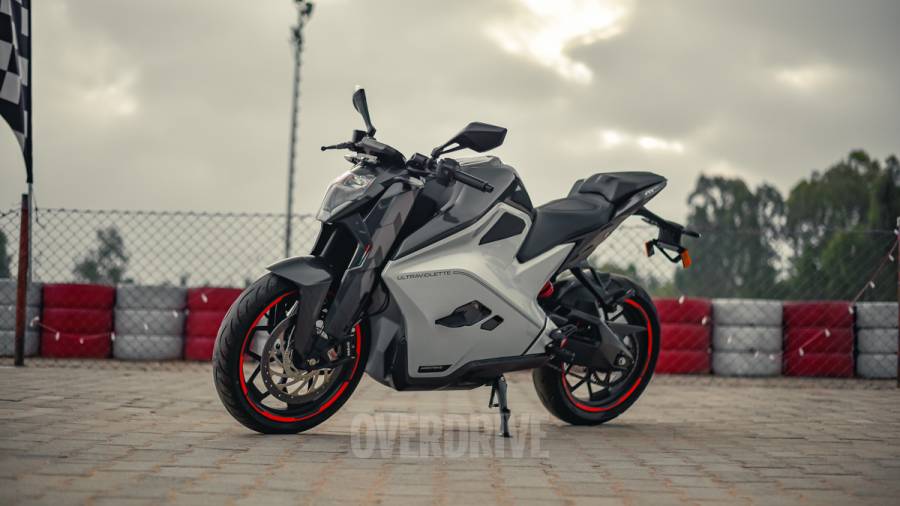
Design
While the silhouette and the general potbellied form of the motorcycle still hark back to the prototype, there are some key changes. For starters, the f77 has lost its party piece or conversation starter - the cool way in which the battery compartment opened to reveal a removable battery pack made up of three individual modules. In place of those theatrics, what you get is a massive, single-piece battery pack that can be had in 7.3kWh or 10.3kWh capacities.
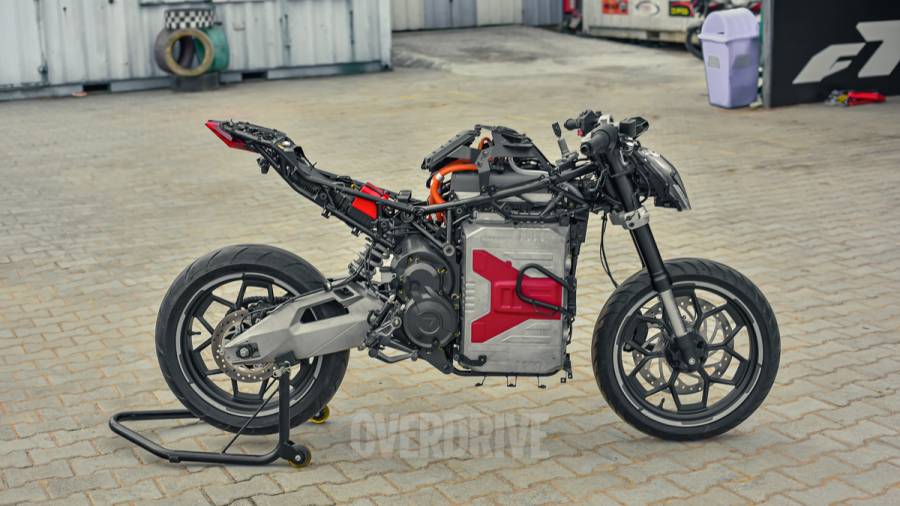
The chunky swingarm sees a slight redesign too and while the bespoke trellis frame retains the same rake and trail as the prototype (similar to the KTM RC), it has been redesigned to hold the new battery and motor from the top and make the powertrain the stressed member. Unlike the prototype which also used the KTM RC's suspension, the production model rides on 41mm USD forks up front and a mono-shock at the rear - both developed by Gabriel. Like this suspension, even the new MRF Speed Brace tyres debut on the f77.
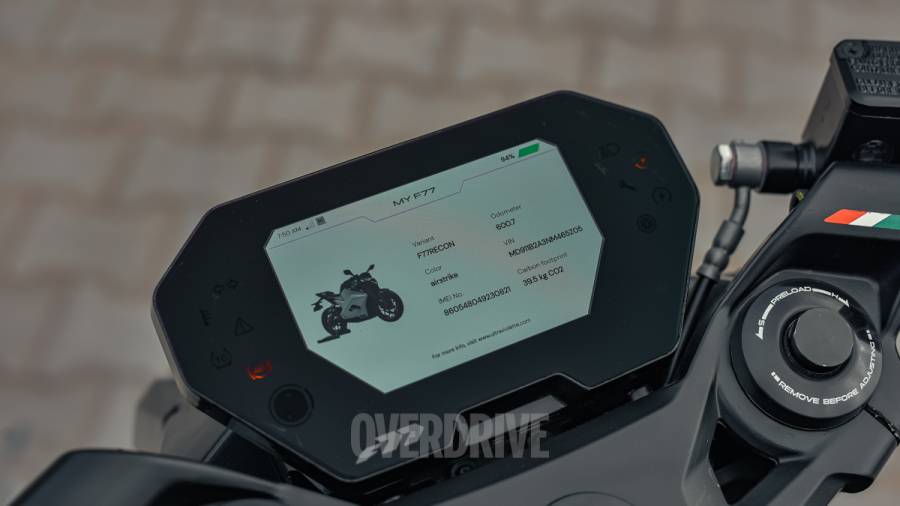
The instrumentation screen is now functional and has an easy-to-use UI, while the switchgear on the left 'bar that controls it looks like the keypad of a PlayStation controller. The CCS2 charging socket from the proto has made way for the IEC 62196-6 socket (similar to the Ola scooter) and we hear that this is going to become a mandatory standard going forward. While that could theoretically allow you to use the Ola charger/hypercharger network (if the software/apps/payment gateways of both these vehicles allow it), you will often find yourself lugging the charger with you - and there is no onboard storage compartment for it (more on this later).
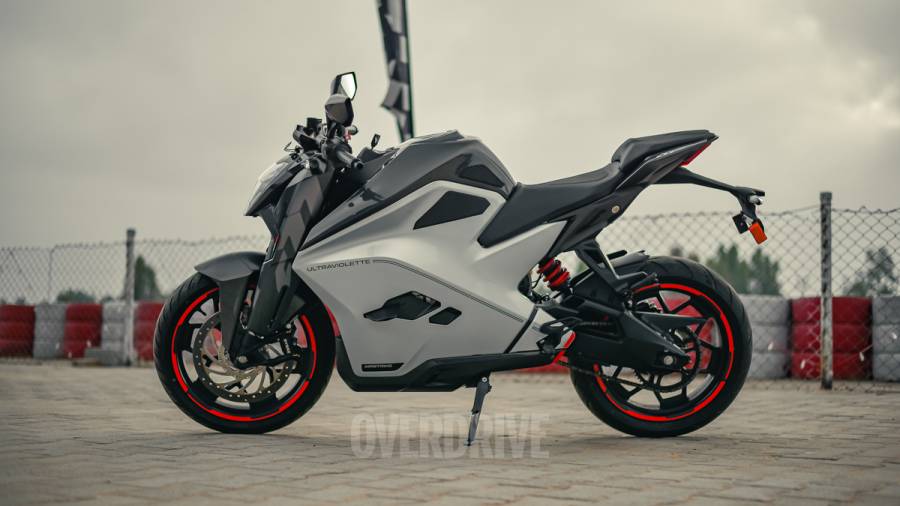
The f77 is a good-looking motorcycle and despite its big belly, it clearly shows its sporty intent. It has a tall asking price that pushes it into the KTM's 390 territory, and while the performance isn't in the same pin code, the fit and finish levels are comparable and feel premium. It remains to be seen though, how it all holds up with age.
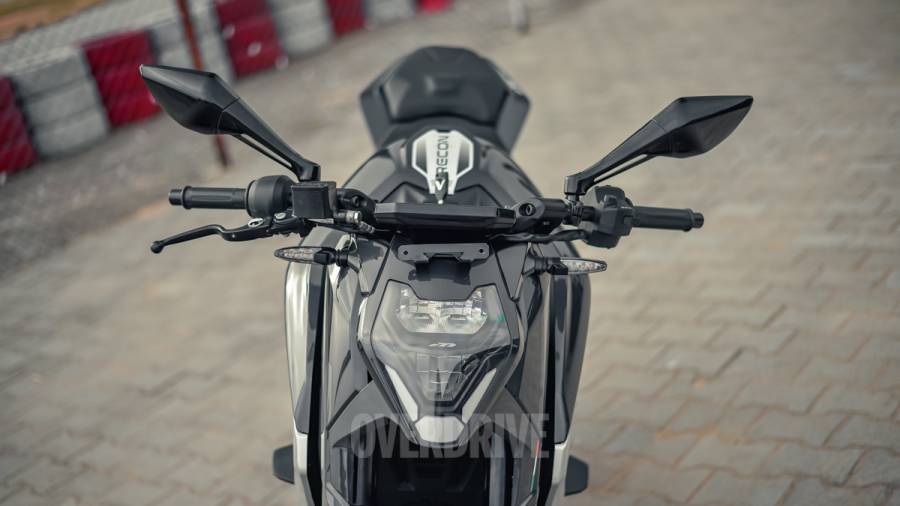
Ergonomics
The 800mm seat height and the narrow, KTM RC-like seating, makes the seating posture manageable for most riders. The rider triangle is sporty and feels more like the TVS RR310 than the KTM RC.
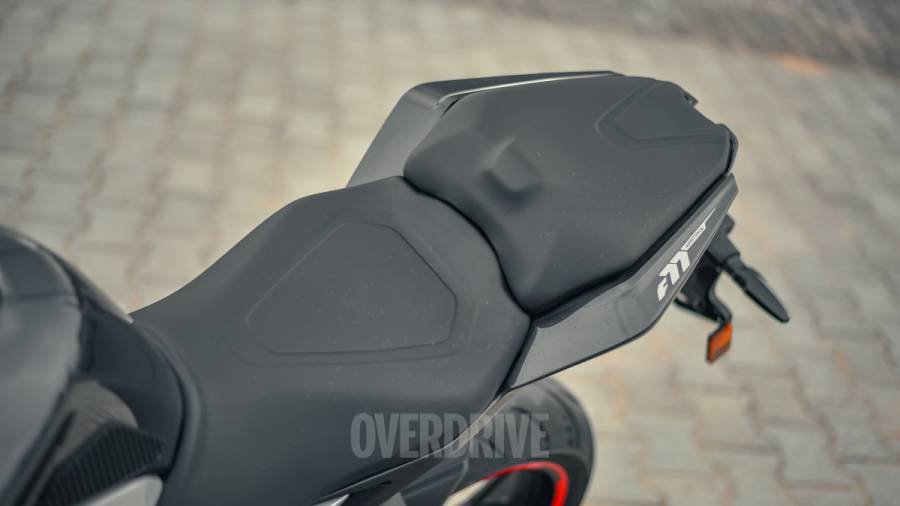
The 10.3kWh battery pack is the largest of its kind on an Indian electric two-wheeler. But large batteries mean big weight too - and the f77 is now 207kg (the smaller battery pack saves 10kg, but all dimensions remain unchanged). You will only feel the weight when manoeuvring the motorcycle on your feet - but the motor offers some resistance when reversing on your feet, which in turn forces you to either switch off the powertrain or engage the Reverse/Forward assistant which makes moving the motorcycle around tight parking spots a breeze. Three-point U-turns on a public road can become challenging and time-consuming with this assistant though and a 5kmph restriction in either direction means that you have to stop after making the U-turn and disengage the assistant to continue riding normally. UV agreed with our concern and assured us to make the Forward to Normal transition a smoother, more intuitive and quicker affair.
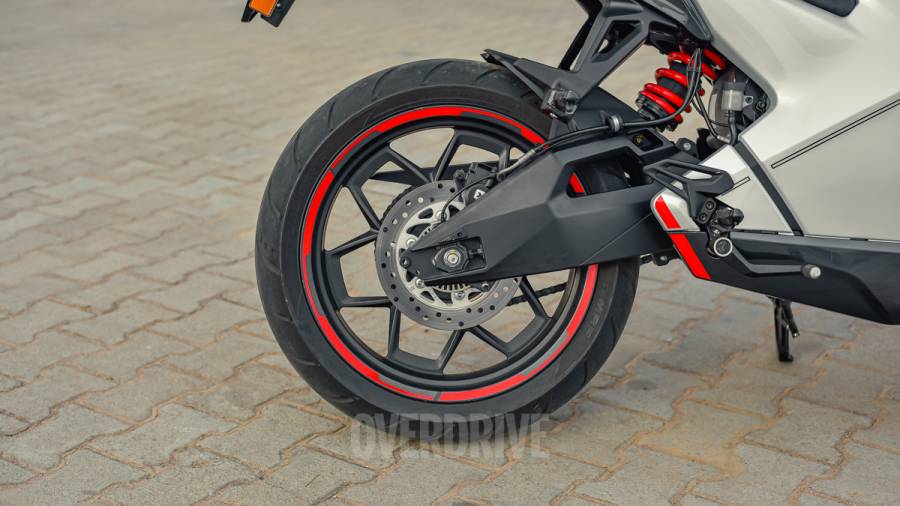
Once at speed, the weight disappears. The powertrain and battery pack contribute to 95kg of the f77's weight and it's all centralised down low and in line with the rider's legs - almost like the BMW GS' boxer engine. That helps keep the CG low and makes the motorcycle feet weightless around bends. The linear power delivery also helps and even tackling hairpins doesn't feel cumbersome.
Performance, Ride and Handling
The f77 comes with a larger motor capable of delivering a peak output of 39PS/95Nm which still manages a 0-100kmph sprint time of 8s despite the heavier build and larger batteries.
There are three riding modes to choose from - a really dull Glide mode which gives you 1/3rd the power, a Combat mode where you can optimise range and performance by using 2/3rds of the power and the Ballistic mode for when you want to go all guns blazing. The riding modes only affect power, its delivery and battery management and can be changed on the fly using the thumb starter. Regenerative braking gets its own three modes which need to be accessed from the fairly intuitive instrumentation.
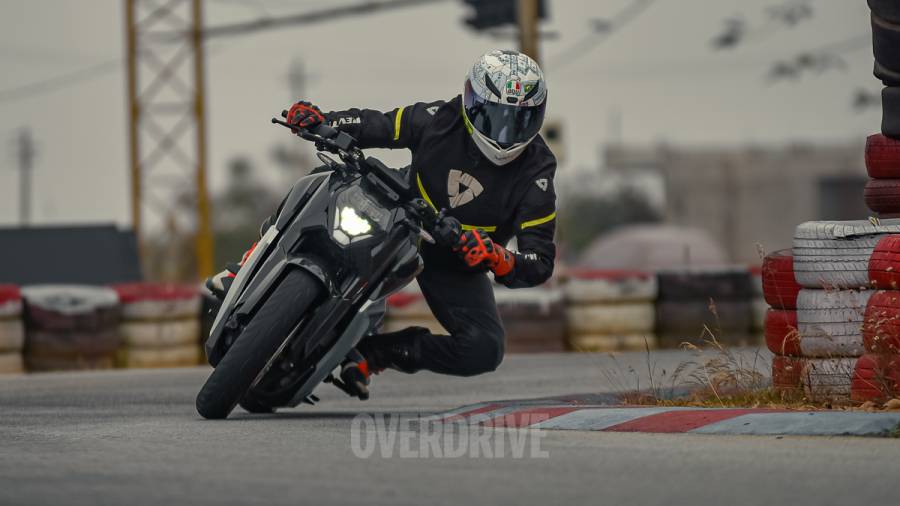
Our ride was split into two parts - an hour at the tight Meco Kartopia go-kart track and a couple of hours at the Nandi hills on the outskirts of Bengaluru. Once I got a hang of the lines at Meco, most of my track riding was in the Ballistic mode. Compared to the Combat mode, it allowed for much quicker corner exits and coupled with High regen braking, it made corner entries quite quick and fun too. Around some of the tighter sections, getting on the…eh…gas…early made the rear twitch a little, but it never broke traction to unnerving levels.
The braking hardware too is comparable to the KTM RC, but on the track and around the mountain roads, the rear brake always felt more powerful than the front and left me wanting for better bite and front bias. The Low regen mode has hardly any deceleration assistance from the powertrain and I was having to stabilise the motorcycle with the rear brake quite often. Trail braking gave me the constant fear of a low side, but I was soon able to put more trust in the tyres.
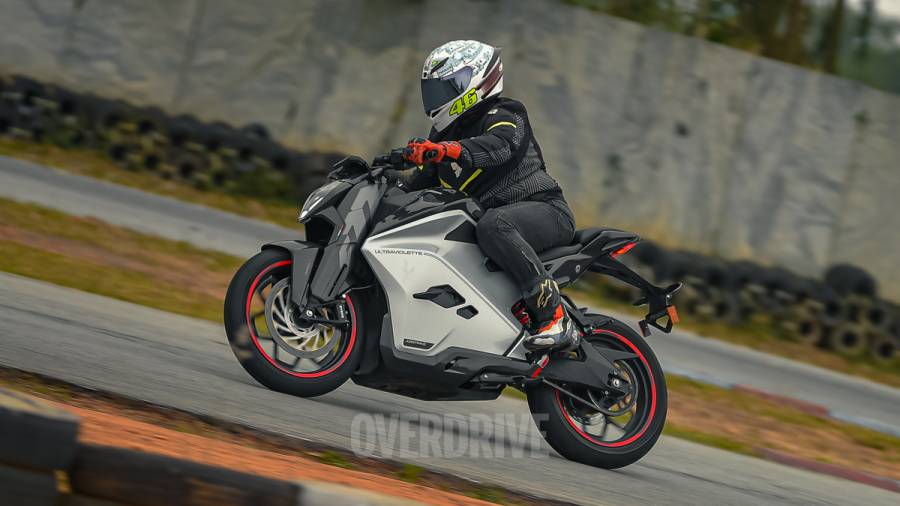
The Medium regen works best for mountain roads that have a lot of flowing corners or switchbacks. On the track, I found the High regen to mimic the effects of engine braking and I was soon able to control all deceleration with the front brake and regen, without having to even tap the rear brake.
The Steel Brace tyres also deserve a mention. As I picked up speed through the later parts of the track session, these tyres felt almost as good as the Metzeler M7s that the f77 prototype wore around the Madras Motor Race Track in our 2019 tests.
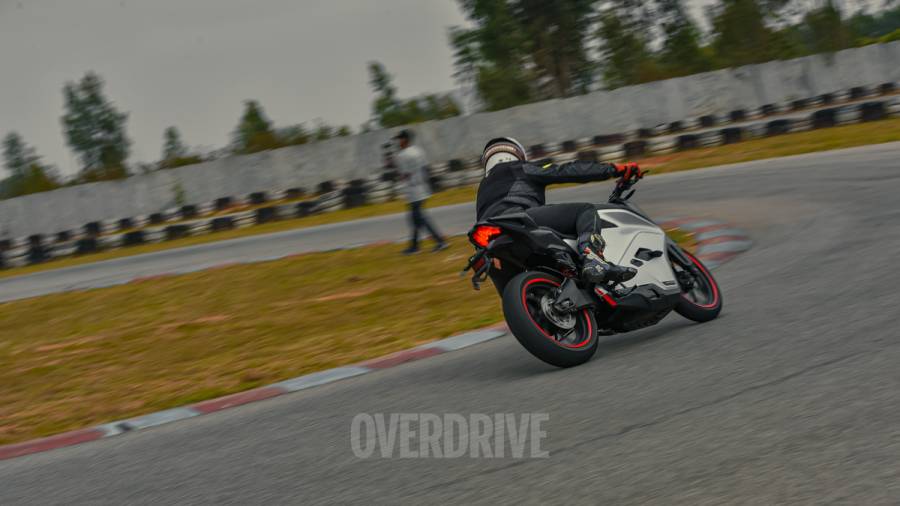
The chassis and suspension remain the real heroes of the f77's sharp handling dynamics, and the stock setup of the suspension - though a bit firm - is quite well-balanced for everyday use. The forks have six clicks of pre-load adjustment while the mono-shock has 3mm of adjustability to compensate for the pillion and luggage. But we couldn't test the bike with either of them, neither could we test the ride quality on poor road conditions - so more on that with a road test.
The f77 rides on the same 1,340mm wheelbase as a KTM RC, which makes it feel sharp and stable around corners. While the more rounded profile of the MRF rubber and the excellent weight distribution of the bike make changing directions through switchbacks quite a breezy affair.
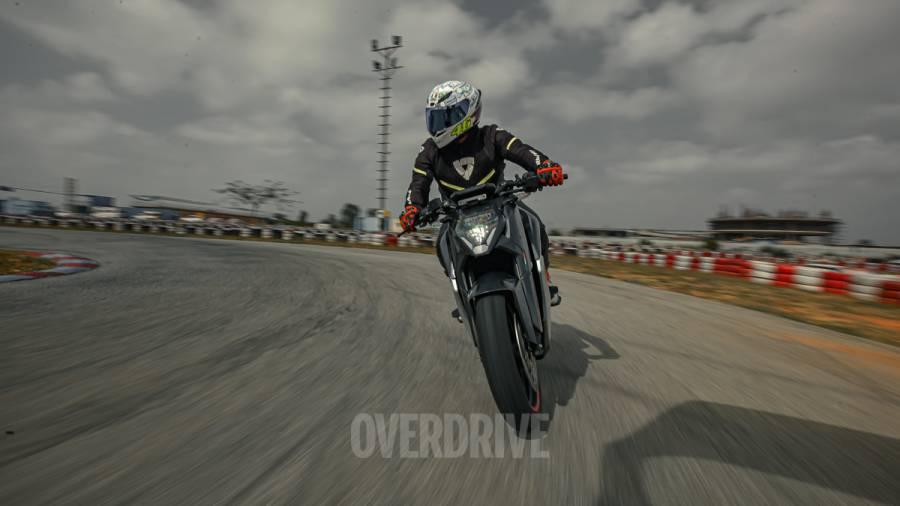
We had wished for at least 200 km of riding range when we previously reviewed the f77 and I'm glad they listened. The larger battery pack claims a 300km range on the Indian Driving Cycle or ~260km as per UV's real-world estimates. Even if the motorcycle manages to achieve between 230-250km, it could mean that you can go on a breakfast ride and top up the batteries by the time you have your grub. On the track, we did about 40mins of riding in the ballistic mode and still had around 40% of batteries to spare. So an hour-long track session at full blast seems doable depending on the nature of the race track. Circuits like the BIC or the MMRT with multiple long straights are likely to deplete the batteries faster.
UV is offering two charger options with the f77. While both plug into the 15amp three-pin socket, the standard charger will replenish around 35km of range in an hour, while the Booster (faster AC) charger will manage 75 km in an hour. Either way, you would have to carry the charger in your backpack or the optional side panniers - but the latter will hamper aerodynamic efficiency and in turn the range and the handling dynamics of the bike. My suggestion to Ultravoilette would be to design an aerodynamic tail-bag instead, shaped like a race cowl.
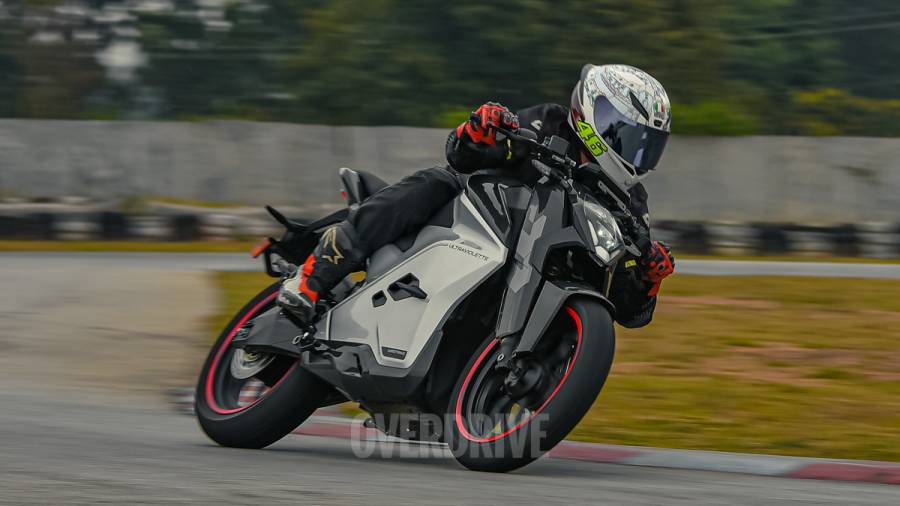
Safety
Ultraviolette claims five levels of safety for the f77 - from the way the powertrain is built, to the fail-safe protocols used for the electronics, to the battery management system and its online monitoring. They even claim to use aero-grade electronics and algorithms in their electronics package - hinting that the fighter jet inspiration extends beyond the design themes and nomenclatures. While the battery pack is largely air-cooled from the sides UV also claim that the thermal management system ensures that the cell at the core of the pack is running at a similar temperature as those closer to the walls of the battery casing. In a nutshell, it's a multilayer security system that's built into the motorcycle and various electronic nannies can bring the motorcycle to a halt to prevent a mishap far before it happens. How effectively this works and what impact this complexity has on long-term reliability, remains to be seen. But on a related topic, we hear that insurance companies might soon mandate a deeper investigation into EV mishaps of any kind to evaluate if the vehicle's onboard systems are at fault or the end user.
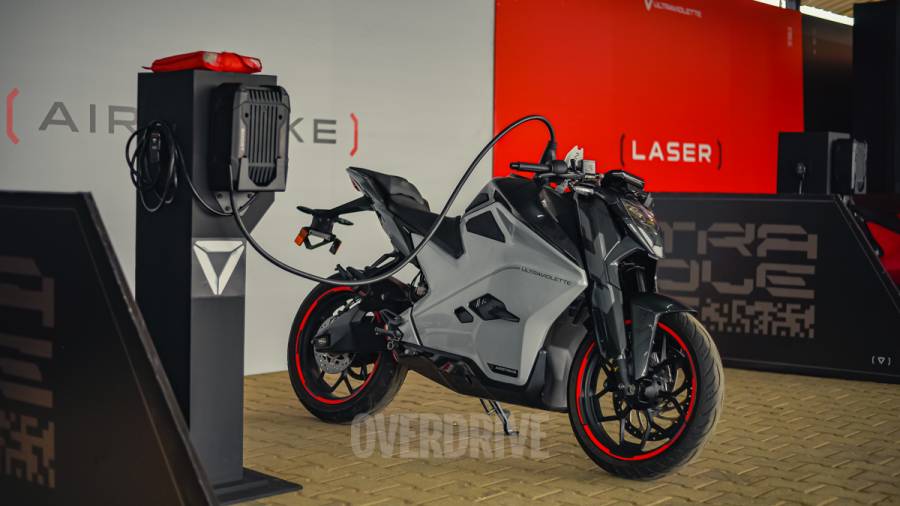
Final thoughts
There is no denying that the f77 is priced quite ambitiously, but the fit, finish and performance pretty much justify the asking price. UV has figured out finance schemes too. Interestingly, we also hear that financial arms are exploring ways to force the manufacturers into pulling the plug on the financed vehicles if their owners default on the repayments. Where the insurance and finance companies get their way is a debate for another day. But hopefully, the EMI is the only recurring expense you might have to worry about with the f77. UV claims that the yearly maintenance for the bike would be as low as Rs 5000 and that you would save big bucks on the running costs too. The math is for you to execute, but all I can tell you is that the production-spec f77 delivers on all the promises made by the prototype and this could very well be the best EV motorcycle you can buy at the moment until the competition heats up.
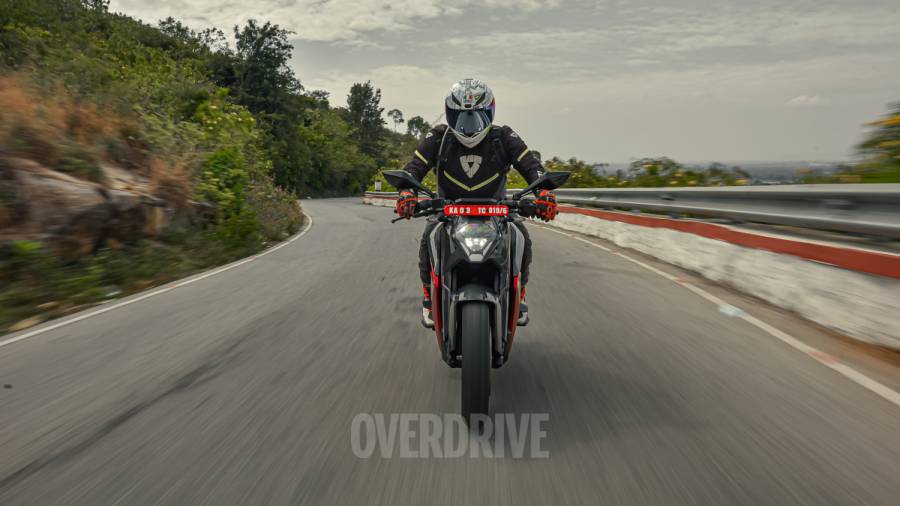
Words Rohit Paradkar
Photography Anis Shaikh
Starts Rs 0
-NA-
Automatic
34.00
90.00
-NA-
